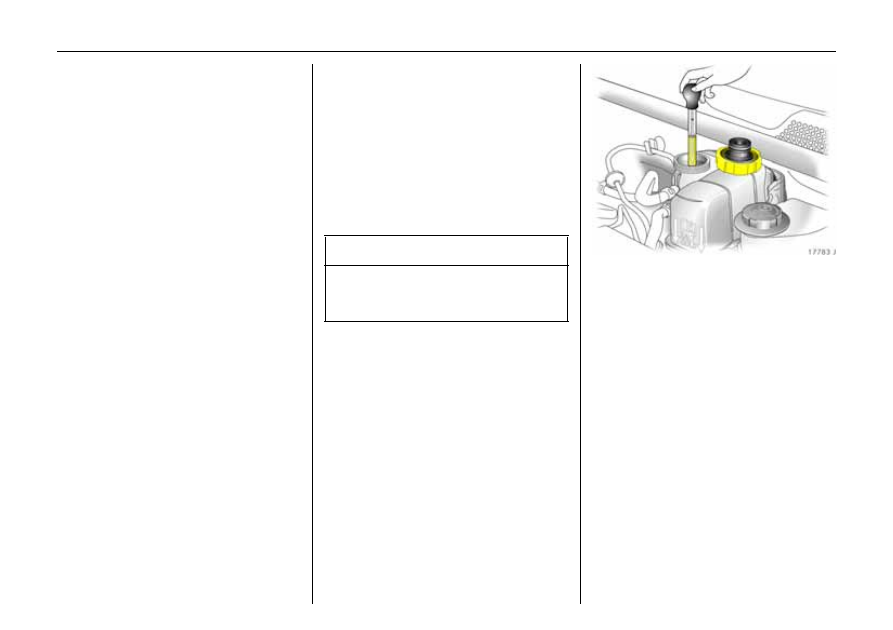Vauxhall Vectra (2007 year). Manual - part 18

274
Service, maintenance
Diesel fuel filter
On each engine oil change, have the fuel
filter checked for any water residue by a
workshop.
For engines
1)
Z 19 DT, Z 19 DTL and
Z 19 DTH , control indica tor
A
illuminates
if there is water in the diesel fuel filter.
Hav e fuel filter checked at shorter intervals
if the v ehicle is subjected to extrem e
opera ting conditions such as hig h humidity
(primarily in coastal areas), extrem ely high
or low outside temperatures a nd
sub stantially v arying daytim e a nd nig ht-
time temp eratures.
Coolant
The glycol-ba sed coolant provides
exc ellent corrosion protection for the
heating and cooling systems as well
as anti-freeze protection down to ap prox.
-28 °C. It remains in the cooling system
throughout the year and need not b e
cha ng ed.
Use of certain a nti-freezes ca n lead to
engine dam age. We therefore rec om mend
that you use only approved anti-freezes.
Anti-freeze a nd corrosion protection
Before the start of winter, have a work shop
check the anti-freeze protection. The anti-
freeze level must guarantee protection
down to a pprox. -28 °C. Insufficient anti-
freeze will reduce the frost p rotection level
and the corrosion protection. If necessary
add anti-freeze.
If c oolant loss is topped up with wa ter,
have concentration checked and a dd anti-
freeze if necessary.
1)
Sales designation – see page 28 4, 285.
9
Warning
Anti-freeze is a danger to health; it m ust
therefore be k ept in the original conta iner
and out of the reach of children.